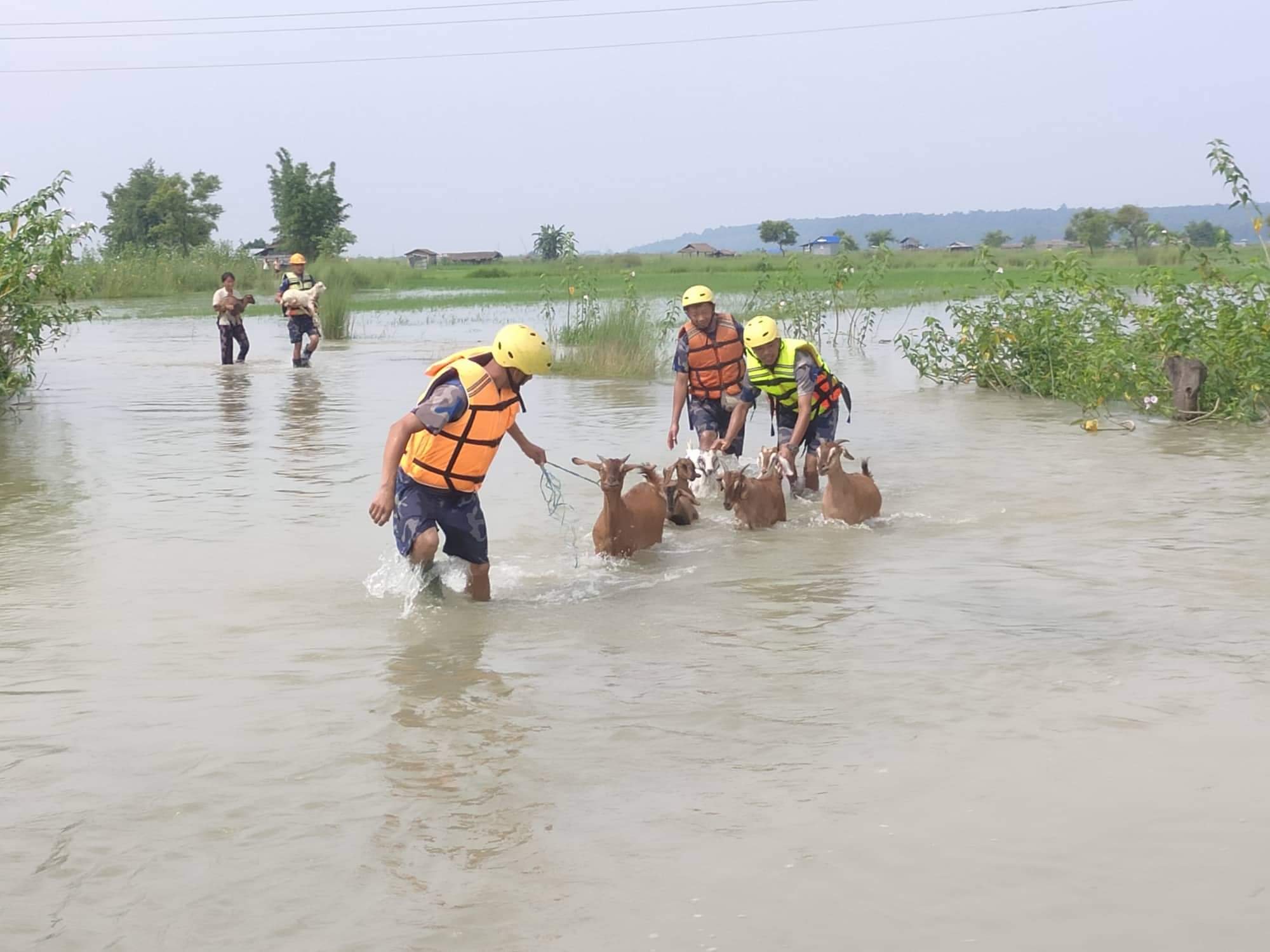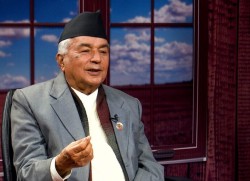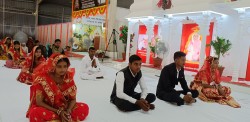Nepal
Amid threat of further floods in the Koshi river, authorities in eastern Nepal have continued rescue efforts to relocate nearly 2,500 families living in and around Sri Lanka Tappu along the western banks of the Koshi river.
The Meteorological Forecasting Division has warned continuing monsoon rains could cause more flooding in eastern and central Nepal.
And to prevent flooding in Nepal and neighbouring Indian states of Bihar, officials said, they are coordinating with Indian authorities to open or close the gates of Koshi Barrage, which has a total of 56 flood control gates.
The crisis started after the Koshi river breached its western embankment early on Wednesday and started flowing from its over 30-year-old course on the western side in Udaypur and Saptari districts, causing flooding and inundation in Sri Lanka Tappu, Hanumannagar and Gobargada areas.
As the floods rendered hundreds homeless, Chief District Officer of Udaypur Birendra Kumar Yadav said members of nearly 2,000 families have been moved to safer areas. He added that the remaining 500 facilities too would be relocated with the help of Nepal Police and Armed Police Force personnel who are mobilised in the rescue operation.

The floods have also rang alarm bells in neighbouring India, where authorities are alert to prevent inundations and are in “constant touch with the Nepali side”, according to Indra Dev Yadav, the chief district officer of Sunsari.
He told NepalMinute: “Since the Koshi water level dropped this morning, less gates are open now, compared to Wednesday when 42 gates had been opened.”
The barrage was built in 1962 with the Indian assistance to minimise flood risks in Bihar and harness the water for irrigation of agricultural lands in Bihar and parts of eastern Nepal.
However, as monsoon rains continue, the threat of floods remains.
On 2008 August 18, a massive flood in the Koshi – triggered after the eastern embankment suddenly broke – claimed the lives of nearly 250 people, mostly in Bihar.
Researches later showed it affected a combined population of 2.64 million in Nepal and India. In Nepal alone, it affected 65,000 people and nearly 700 hectares of fertile land, mostly in Sunsari.






